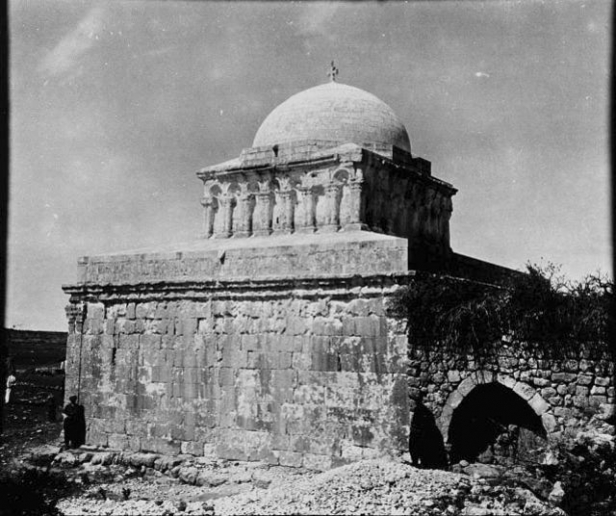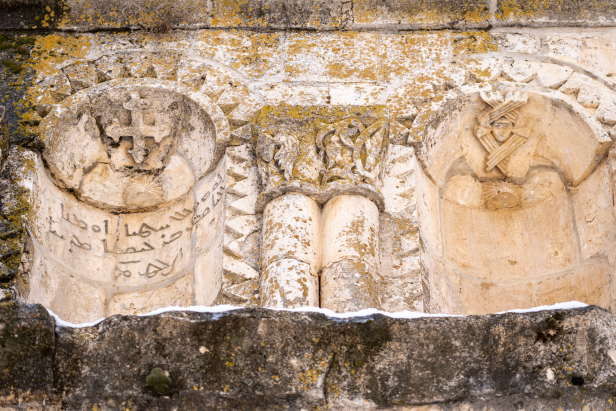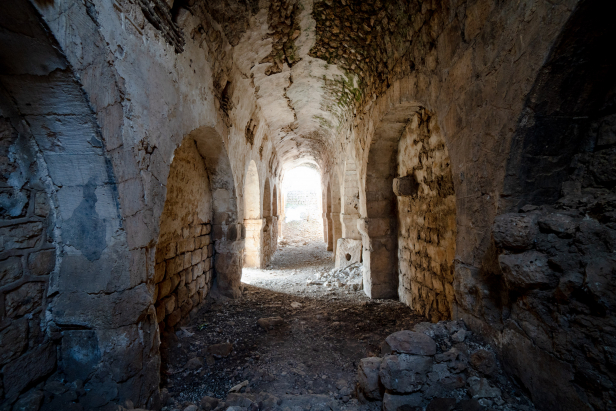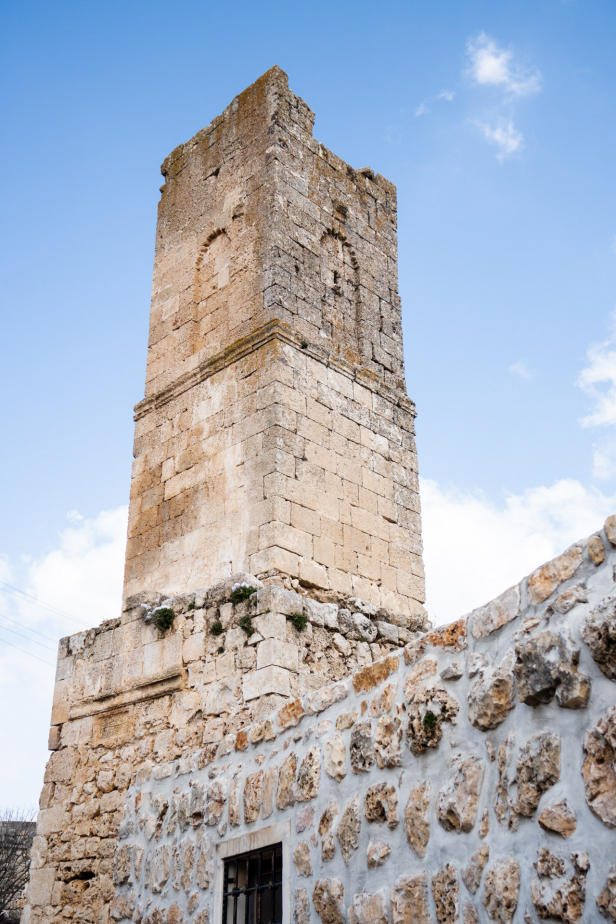Yoldath Aloho Church and the Village of Anıtlı (Hah)
Syriac History, Suryoyo, Village Life, Ancient Churches, Religious History
/ By Josh
Cost: Free
(Though a donation at the church is always appreciated)
Great for: Syriac History, Suryoyo, Village Life, Ancient Churches, Religious History
In the midst of Tur Abdin, the ancient homeland of Turkey’s Syriac Christians, the village of Anıtlı stands out as one of the richest. Home to monasteries, ancient houses, chapels, the ruins of the largest church in the region, and the stunning church of Yoldath Aloho, the village of Anıtlı should be on the list of anyone who wants to see the beauty and rich culture of the Syriacs of Tur Abdin.

While the town appears on official documents as Anıtlı (Turkish for “with a monument”) locals still refer to it by its historic name of Hah. While it is certain that the towns history dates far back into ancient history, little is known about the early history of Hah as no archaeological excavations have been undertaken yet. Assyrian tablets dating back to the 9th century BC are believed to mention the city of Hah which was in Assyrian territory during various times.
Subscribe to The Art of Wayfaring
It is believed that the people of Hah accepted Christianity very early on and was the seat of a Bishop already in the 4th century. The bishop at Hah presided over all the Tur Abdin until the region was split and the Monastery of Mor Gabriel also gained a Bishop.
Why Visit?
Yoldath Aloho, Church of the Mother of God
The main draw to the town of Anıtlı is the Church of Yoldath Aloho, The Church of the Mother of God, arguably the most beautiful of the many churches of Tur Abdin. The church is part of a large monastic complex on the southern edge of the town of Hah and usually open to visitors. The church is thought to have been built around 450 AD and expanded by Byzantine Emperor Justinian in the 6th century with additions being made right down into the modern period.

The original Church of Yoldath Aloho is unique both in its layout and its decorations. The church is entered through a wide narthex. The central dome is roughly octagonal and set on deep squinches. On the right and left are wings for the choir topped by semidomes. The apse is deep set with intricate mouldings and garlands carved into the limestone masonry. In the curve of the apse are cut seven niches, the tops of which are scalloped in the classical style and supported by pillars topped by ornate capitals.

The exterior of the dome consists of an ornate square structure with two levels of pillared niches built into its face. The upper row of niches was added in 1939 and has images of various religious symbols in the arches. The lower niches are more ornate though the stone is badly eroded.

While historians date the construction of the church to the mid 5th century, local legend traces it back to the very birth of Christ and the Wise Men or Magi of the Gospel of Matthew (chapter 1). According to the story there were twelve wisemen who set out from the east following the star to the place of Jesus’ birth. As they made their way to Judea, they passed through northern Syria and, at the city of Hah, decided that nine should stay while three continued on to find Christ.
Subscribe to The Art of Wayfaring
In return for the gifts of gold, frankincense, and myrrh, Mary, mother of Jesus gave the Wise Men a piece of the swaddling cloth used to wrap the infant Jesus. When the three had reunited with the rest of the wisemen at Hah they were unwilling to cut the cloth and instead decided to burn it and share the ashes between them, but the cloth, rather than being consumed by the fire, transformed into twelve medallions.

Seeing this miracle the twelve wisemen built a monument to the Mother Mary (thus the name Yoldath Aloho, Church of the Mother of God), each man laying one layer of stone in the outer wall. With the arrival of Christianity the monument was converted into a church.
Ruin of the Catherdral of Mor Sobo
Up the hill from the Church of Yoldath Aloho towards the center of the town are the remains of the Church of Mor Sobo. The exact date of its founding isn’t clear though it too appears to have been renovated multiple times with new vaulting built inside the nave to support the roof. While the roof has collapsed the awkward placement of the piers against the original walls are still obvious. The church has been in ruins for centuries, it was destroyed by Tamerlane, who ravaged the region in the 14th century.
Before its destruction the Church of Mor Sobo was the largest church in the Tur Abdin region, designed as a three-aisled basilica fronted by a sizable narthex. On the eastern end of the center aisle was a wide apse topped by a semidome. The base of a cross in the semidome is still visible though the rest of the apse has collapsed. In front of the apse there are pieces of the screen with engraved crosses peaking out of the rubble and weeds.
Subscribe to The Art of Wayfaring
The vault of the central and right (south) aisle have collapsed, though the vault of the north aisle has remained standing. A great crack running down the length of the ceiling would suggest that its collapse is imminent, though it doesn’t seem to have grown since Gertrude Bell visited and took pictures of the site in 1909. Hopefully the ancient structure will receive some help before it falls into a worse state.

Across the narrow street to the east of the church of Mor Sobo is a large square tower that had once served as the church’s bell tower. The tower was appropriated for a minaret when a small mosque was built at the towers foot. The mosque is currently not in use.

The Church of Mor Shmuel
Immediately north of the narthex of Mor Sobo is the easy to miss church of Mor Shmuel. The church is quite ancient though, the bell tower was added only recently when the church was restored sometime around or after the 1990’s. While the exterior appears very plain, the door from the tiny narthex into the nave is incredibly ornate. The architectural elements around this door could have been taken from another building as they are not well fitting to the space, though it is possible that this is only because the church was heavily damaged and later restored.

Hah “Castle”
At the summit of the slope that the town was built on, is a cluster of stone houses built tightly together. The houses are built in a rough rectangle with only a few windows on the outside and only a single heavy door that enters into a central courtyard. Like the fortress church of Aynvardo, many buildings in Tur Abdin were built as fortresses, a necessity in the centuries of conflict and persecution. The easily defended “castle” sheltered some 2000 residents in 1915, a year that would become known as “Sayfo”, or “The Year of the Sword” when the Syriac residents of Tur Abdin and other areas were massacred. The homes are still lived in today and the little courtyard is filled with household animals and residents.

Monastery of Mor Serkis and Mor Bakus
A short walk beyond the northern edge of the town is the little monastery of Mor Serkis and Mor Bakus (St Sergius and St Bacchus), a pair of saints who had been Roman Soldiers martyred for their faith in the city of Al-Resafa, near Raqqa in modern Syria. The saints are usually paired and are particularly revered in the Syrian, Arab, and Armenian traditions.

The oldest remaining parts of the monastery date back to 789 though it too was expanded, destroyed and repaired over the centuries. The last monk to live in the monastery left in the 1970’s, though, as he was from a family of skilled masons, he repaired much of the complex while he was at Mor Serkis and Mor Bakus. The church itself is quite small consisting of a barrel-vaulted room with a small apse behind a small archway in the east wall. Above the church are rooms reached through narrow stairs which had served as monks quarters. In the courtyard is an odd square structure, on the top of which can be seen some circular masonry. It is possible that this could be the remains of a stylite’s pillar though this is not yet for sure.

The only other confirmed stylite pillar found in Tur Abdin is the pillar in the center of the Mor Lazoor monastery in Habsus (Mercimekli).
The church is not in regular use apart from on the feast days of Mor Serkis and Mor Bakus.
How To Get There
General
While locals still refer to the village by the name of Hah, it will only show up on modern maps or navigation programs as Anıtlı. Head north out of Midyat on the D955, on the edge of town turn off to the right (east) onto the Midyat-Dargeçit road. 17 kilometers later turn right (south) towards the village of Ortaca. In Ortaca turn left following signs marked for Anıtlı (Hah). The roads here aren’t named and many locals only know the towns by their local names rather than official names so asking directions can be tricky. There are minibuses running from Midyat if you don’t have a car.
For more about car rental and driving in Turkey make sure to read our full drivers guide.
Where To Stay
Your best option for accommodation is the Town of Midyat which is home to a good selection of budget hotels as well as some beautiful boutique hotels in the old quarter. Here the hotels are often in old mansions or churches and are often your best choice to sit and try some of the famous local wines made by the Syriac (Suryani) locals.
Other Tips
Planning on visiting Yoldath Aloho? Make sure to check out the many other amazing sights of Tur Abdin, Mardin, and Turkey’s South East!
Subscribe to The Art of Wayfaring
Have any tips or info to add? Spot any mistakes? We’d love to hear about it.